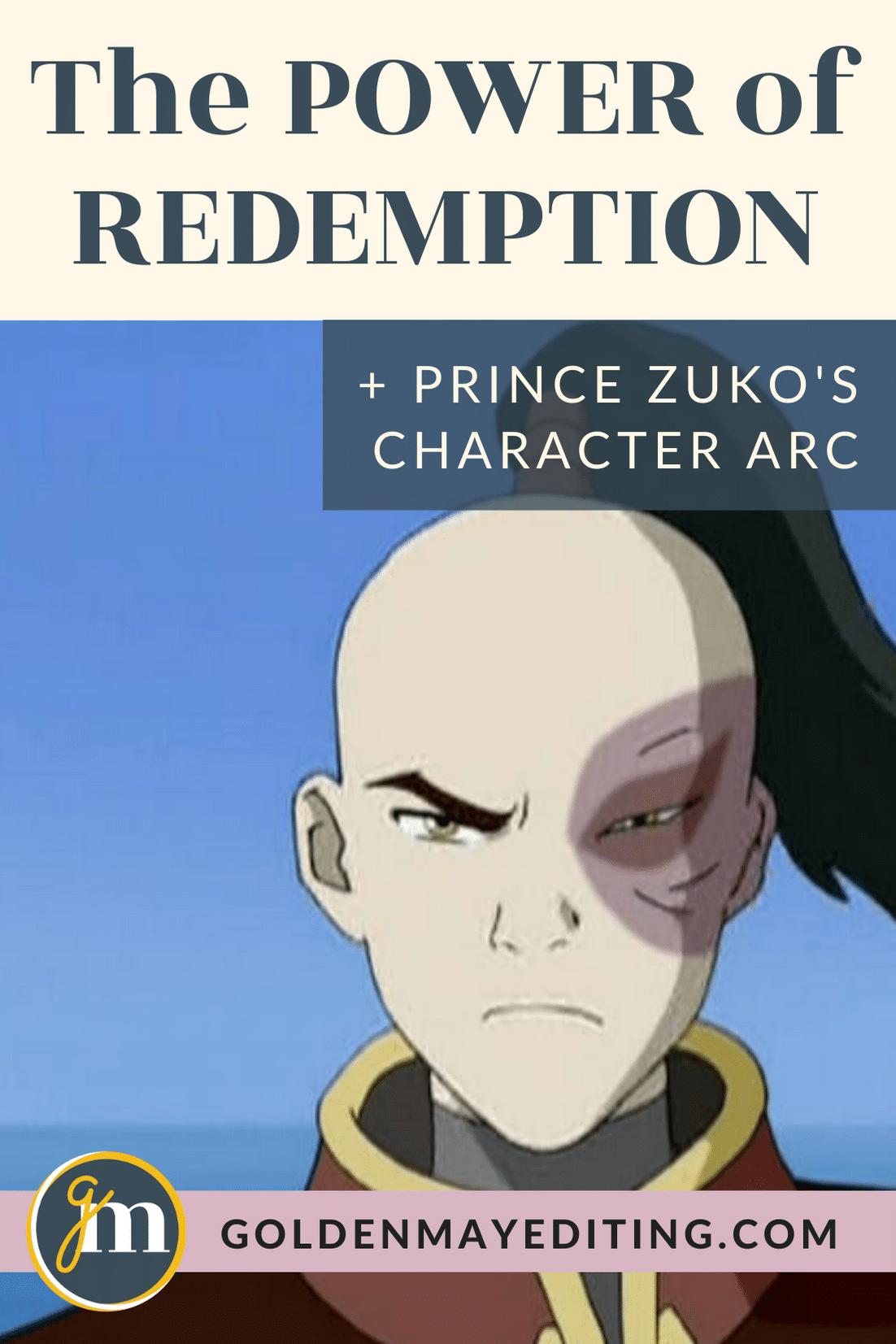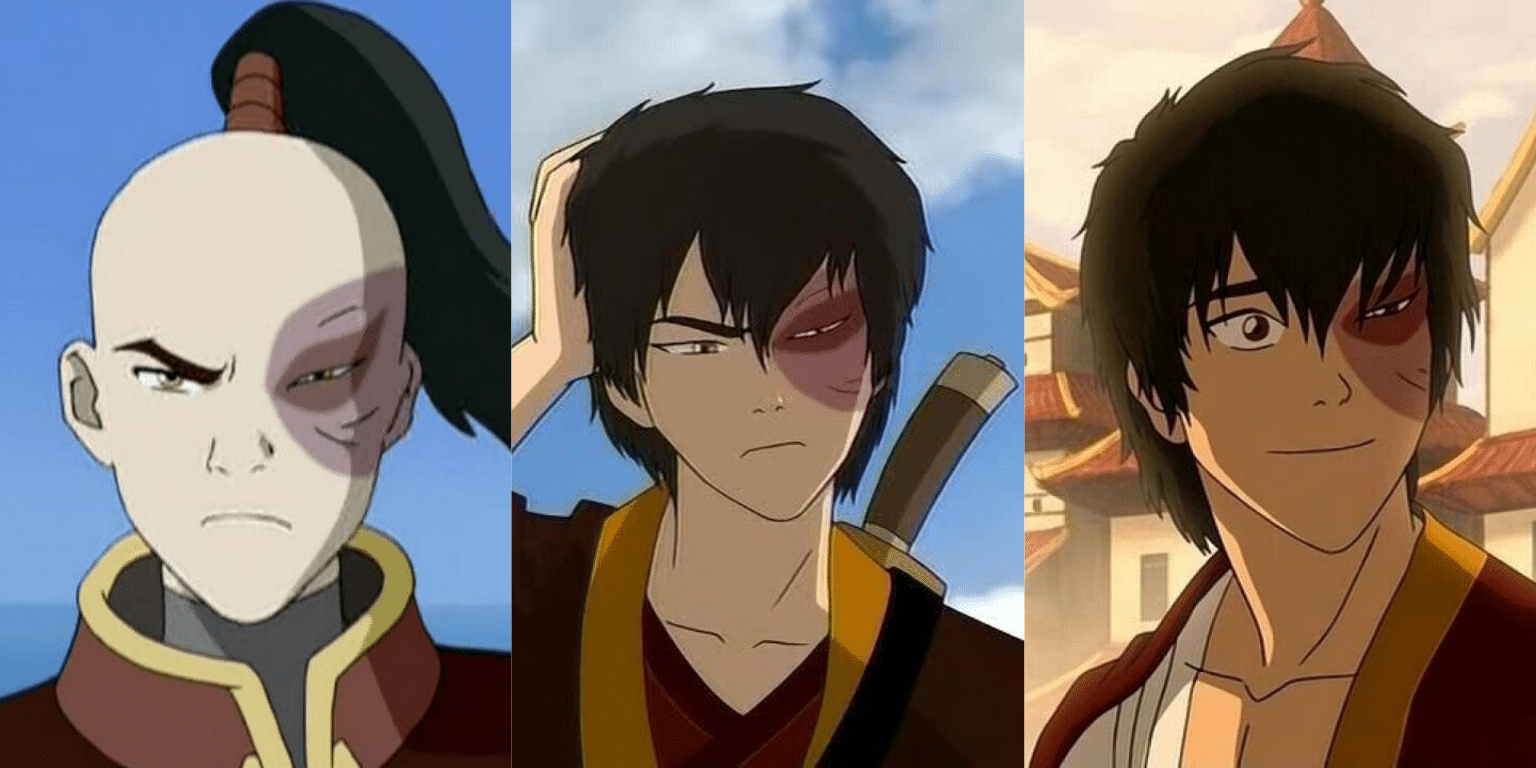Readers love characters who are complicated, passionate, and flawed—just like we are. We enjoy seeking as they seek, learning as they learn. As writers, we want to provide this experience for our readers, but oftentimes we can chafe against making our characters truly bad. We don’t want to sink our readers into a dark story, and we definitely don’t want to endorse horrible behavior!
But making a character ‘bad’ from the get go is an effective way to deliver your message. The further a character has to go to learn a lesson, the more that lesson will be apparent to readers.
Redemptive arcs can be exceptionally powerful.
Zuko, an antagonist of Avatar: The Last Airbender (ATLA), is a prime example of a character whose redemptive journey of change is just as impactful, if not more, than any other character in the story (including Avatar Aang, the protagonist) precisely because he has so far to go in learning the story’s message.
Spoilers ahead, beware! If you haven’t watched Nickelodeon’s Avatar: The Last Airbender, stop what you’re doing now and binge all 3 seasons on Netflix.
What is a Redemptive Character Arc?
A redemptive character arc is a journey of change wherein a character who does “bad” or “morally gray” things eventually becomes a hero or “good” character. These arcs can be used with either protagonists or antagonists. The character’s redemptive journey is usually peppered with choices that represent the dichotomy of good and evil, and the character must struggle against or be tempted by both. By the end, the internal change the character experiences ultimately results in choosing good, or redemption.
Redemptive arcs are powerful. They allow readers to experience what happens when people who do bad things struggle to do good things—a problem we will all be faced with during our lives. They teach us that while it is not easy to be “good,” it is worth it, and one is never too far gone to change. Today, let’s focus on how to successfully craft a redemption arc.
Zuko’s Journey of Change
Prince Zuko from ATLA serves as an example of redemptive arcs done well—so well that we end up resonating more with the antagonist than with the protagonist. Let’s examine what he wants, why he wants it, and what flawed beliefs are guiding him.
- Zuko’s EXTERNAL GOAL, what he thinks he wants, is To capture the Avatar for his father and, in doing so, regain his honor.
- His INTERNAL GOAL, or what he actually wants, is Love and respect from his family and nation.
- The INTERNAL OBSTACLE driving those goals, and getting in the way of his success, is his belief that Honor is what makes you lovable.
Zuko’s belief that honor will make him lovable is driving him to capture the Avatar so he can regain honor, and therefore love. These are the key elements of his psyche that set the stage for the redemptive journey he undergoes.
Let’s look at how these goals and beliefs manifest in his behavior, and shift during his arc of change, throughout the three Acts of Avatar: The Last Airbender.
Act 1 — Confronting the Internal Obstacle
A story’s Act 1 is about setting the stage, introducing the character, and establishing the character’s goals and Internal Obstacle. Act 1 contains the story’s Catalyst, an inciting incident when the character is forced to confront their Internal Obstacle for the first time. The Catalyst event is what sets the story’s events in motion and thrusts this character on their path toward change.
In a redemptive arc, this is when the character’s ‘bad’ qualities are shown. They’re acting immorally, or at least their actions are very ‘grey’, but because their goals and Internal Obstacle are revealed, the reader knows why they’re acting the way they are.
Example: Zuko’s Act 1
Zuko begins as a petulant, banished young prince who is driven by his desire to regain his honor (external goal), which he believes will earn him his abusive father’s love and respect (internal goal) and allow him to return to his family and homeland.
After years of fruitless searching, Zuko finally discovers the missing Avatar. If he is able to return the Avatar back to his father, Fire Lord Ozai, Zuko will be welcomed home after two years of banishment, but if he doesn’t he must remain banished forever.
At the Catalyst, Zuko underestimates the Avatar, who easily evades capture. Zuko’s desire to capture the Avatar grows and he’s forced to decide whether he will obsessively continue to hunt the Avatar across the world (believing that regaining his honor is the only thing that makes him lovable) OR whether he will give up the search at the advice of his Uncle Iroh (realizing that he has love and respect right in front of him). He chooses to continue his hunt for the Avatar.
Act 2 — Fixing the Internal Obstacle the Wrong Way
A story’s Act 2 revolves around the character trying to overcome their Internal Obstacle the wrong way. In this Act, things will likely get progressively worse as the character is forced to confront their deep-rooted flaws. This Act concludes with the character hitting rock bottom and finally changing as a result of their failure.
In a redemptive arc, this is when the character’s ‘bad’ qualities deepen. They’re really struggling between right and wrong, and even though they’re starting to show some ‘good’ or ‘better’ qualities, eventually wrong wins in the end. They make a really terrible choice, based on their Internal Obstacle, that plummets them to an inescapable failure—one that forces them to face and acknowledge their Internal Obstacle faults.
Example: Zuko’s Act 2
As Zuko follows the Avatar around the world, and eventually faces off with him, we see him continually make selfish choices focused around regaining honor because he believes it is the only way he can be loved again (his Internal Obstacle!).
After failing to capture the Avatar, Zuko sinks even farther into despair. He struggles with recognizing the purpose of his life as he realizes he will probably not be able to return home (his external goal). On top of his banishment, he and Iroh have been branded as traitors and they are now the ones on the run from Zuko’s sister, Princess Azula. Meanwhile, Zuko gradually learns more about himself and we begin to see a change in him due to Iroh’s influence. He starts to question what “honor” means to him.
At the midpoint moment, Zuko has the opportunity to help the Avatar and his friends escape from Azula. Instead, Zuko chooses to aid his sister and attack the Avatar, once again choosing his Internal Obstacle and backtracking on the small growth he’s made so far. Uncle Iroh, on the other hand, chooses to defend the Avatar and is arrested for treason.
As a result, Zuko receives the love and respect he so desperately wanted from his father and the Fire Nation (his external goal). However, his false victory leaves him questioning his father’s ideals and he’s forced to wrestle with the concept of honor, and whether the love and respect he thought he wanted should come at the cost of doing the wrong thing.
Zuko reaches his rock bottom when an imprisoned Uncle Iroh rejects him. He then finally realizes that he has made the wrong choice to pursue Aang and he has actually lost both his honor and the love of those he loves. This failure forces him to realize the Story Point that Love and friendship bring balance to the world. He chooses to abandon his father’s plans and instead help the Avatar in his quest to save the world.
Act 3 — Overcoming the Internal Obstacle
Act 3 is about the character fixing the problems created in Act 2 and fixing themselves by overcoming their Internal Obstacle. During this Act, the character proves that they have changed and learned. By the end of this Act, the character should be the opposite image of who they were at the beginning of this journey.
In a redemptive arc, this is when your character finally chooses to embrace the ‘good’ over the ‘bad’. They fully change from a problematic character into a positive one, and the distance of that change has us rooting for them deeply! By changing, they’re finally able to embrace what they need to do to truly succeed in obtaining their Internal Goal.
Example: Zuko’s Act 3
After Uncle Iroh rejects him, Zuko wrestles with recognizing his own ideals/honor, and during his aha! moment at the end of Act 2, he realizes that he must reject his father, Fire Lord Ozai (and therefore his father’s ideals). Zuko confronts his father, and chooses what he now knows to be honorable—to join the Avatar’s quest to restore balance to the world and defeat Fire Lord Ozai.
He then makes amends with the Avatar and his friends, eventually becoming an integral part of their group. He even apologizes to Uncle Iroh, who immediately forgives and embraces him. We see Zuko adopt humility and patience, becoming the exact opposite of who he was at the beginning of the story, as he prepares to battle his father and his sister once and for all.
During the final battle with his sister, Zuko solidifies his redemption by sacrificing himself for the Avatar’s friend, Katara, which allows her to defeat Azula. Through this sacrifice, we see his redemption arc complete as he has finally found friendship and love (achieving his internal goal) by embracing his own honorable ideals (overcoming his internal obstacle).
Why it works!
As a redemption story, Zuko’s arc is so successful because he authentically and believably changes and grows from ‘bad’ to ‘good’. After watching him struggle for so long to do the right thing, we’re all cheering at the end when he finally learns that honor comes from doing the right thing (overcoming his Internal Obstacle) and by doing so, receives love from his new friends and family—achieving his internal goal the exact opposite way than he had intended. We understand why he made bad choices, we understand his struggle at every decision point, and we triumph with him as he discovers his own identity. We learn with him through his change.
Of course, your character—protagonist or antagonist—does not need a redemptive arc. There are many different ways to structure a character’s journey. That being said, redemptive arcs done well can be the most moving stories out there. There’s something alluring about them, the human nature in us loves proof that it’s possible for truly ‘bad’ characters to become ‘good’.








Leave A Comment